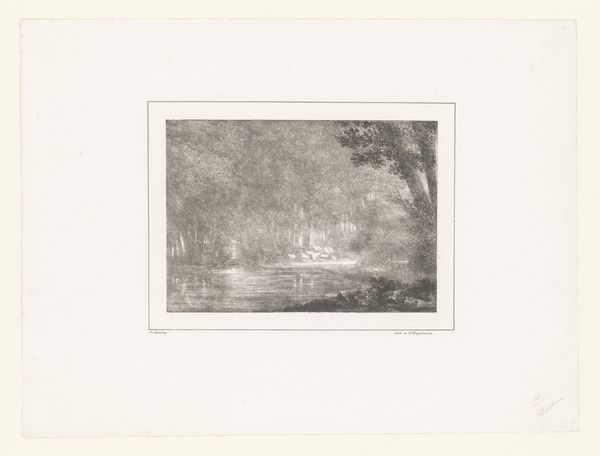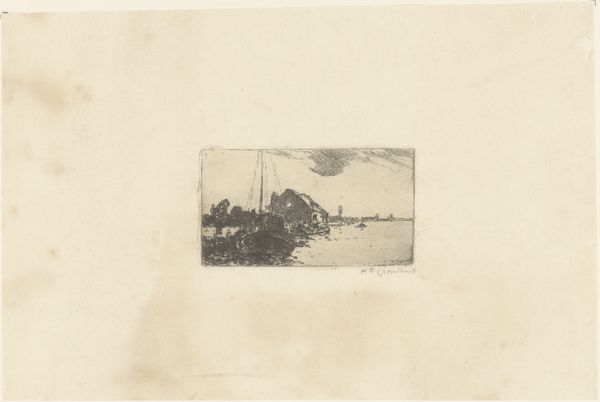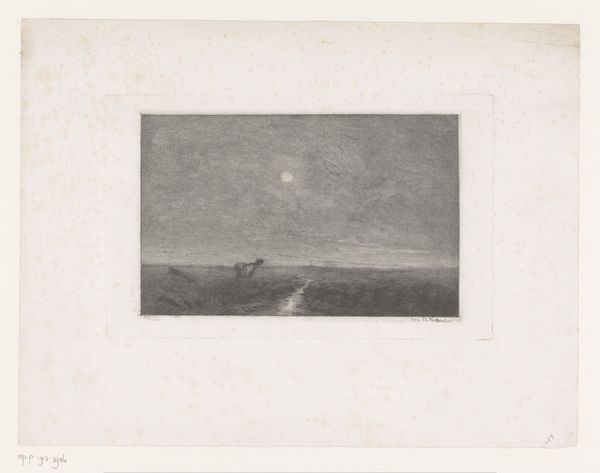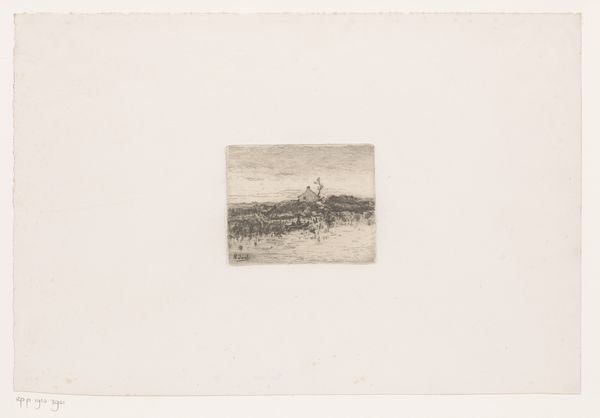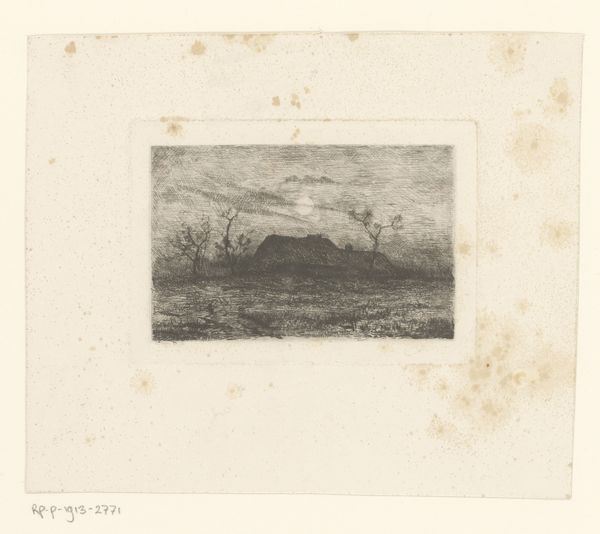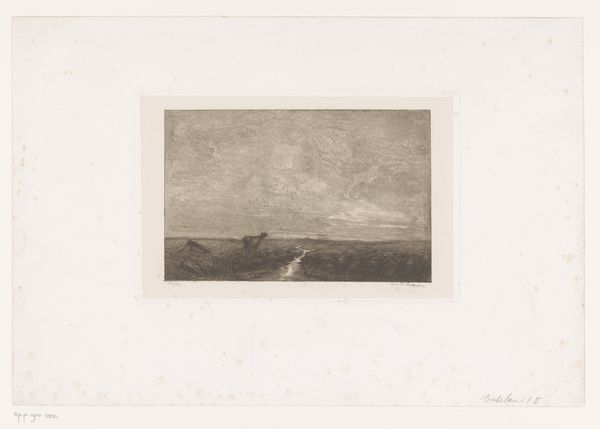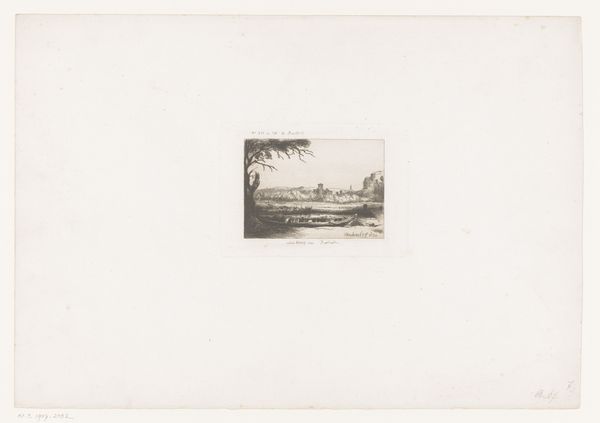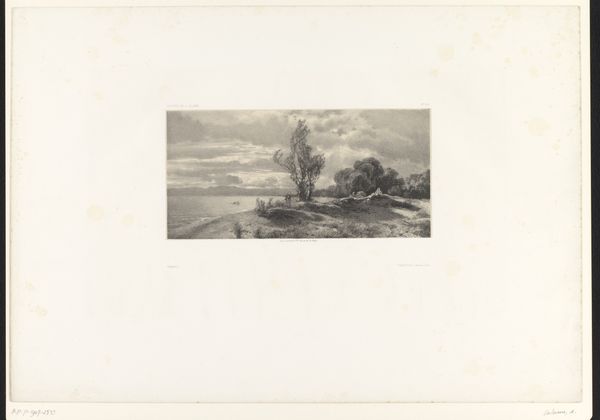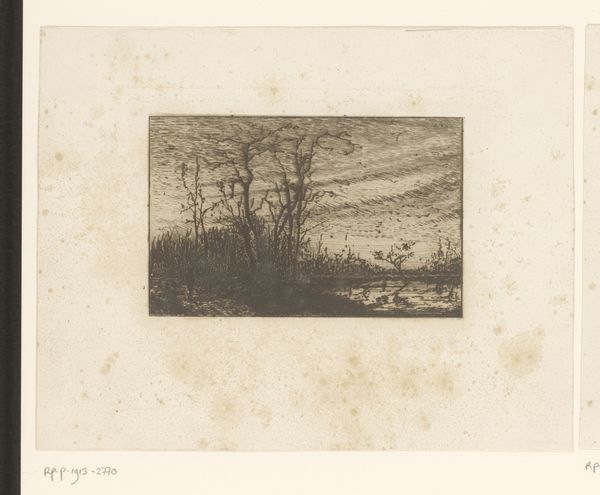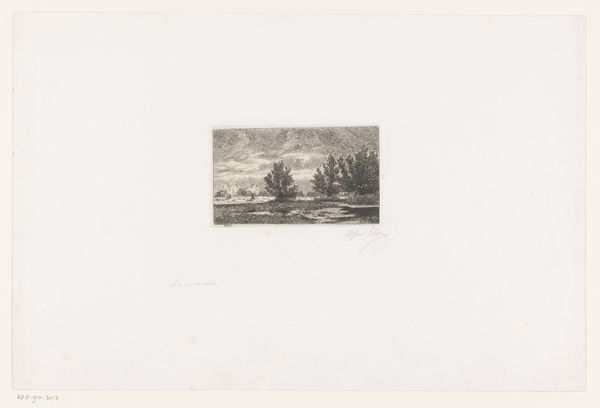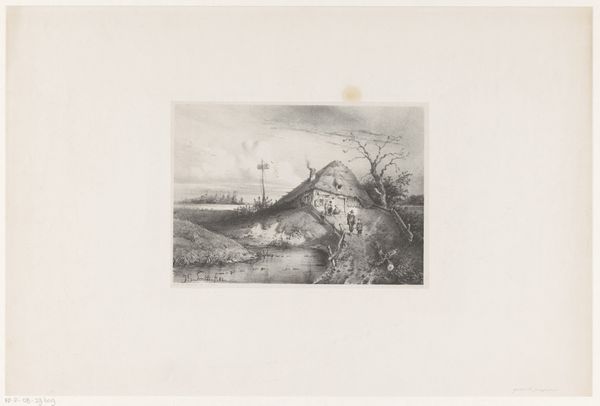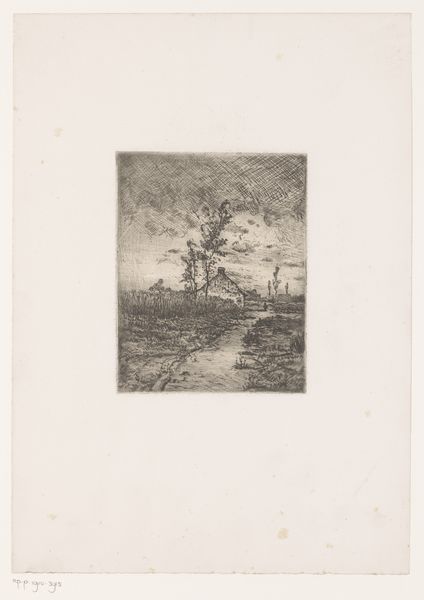
drawing, paper, ink
#
drawing
#
impressionism
#
landscape
#
river
#
paper
#
ink
Dimensions: height 146 mm, width 200 mm
Copyright: Rijks Museum: Open Domain
Curator: Here we have L. Delfenne's "Riviergezicht met boot langs de beboste oever," a drawing created between 1850 and 1910. It depicts a river scene with a boat near a wooded bank, rendered in ink on paper. Editor: Immediately, a certain somber, contemplative mood settles in. The composition, almost monochromatic, really focuses your eye on the contrasts between light and shadow along the river’s edge. Curator: Absolutely. Look at the use of hatching and cross-hatching; notice how Delfenne uses these techniques to model form and suggest the texture of the foliage and the reflections on the water. The darker inks concentrate along the trees, in turn, drawing the eye further in to appreciate lighter figures positioned at the far bank. Editor: Speaking of figures, consider the context of such river scenes during this era. Rivers weren’t just landscapes, they were vital arteries of commerce and, too, conduits for social interaction and, indeed, spaces that might speak of nature's role in industrial growth or decline. Was this leisure, or a portrayal of their place? What message might be inherent to a boat trip like this one, during this era? Curator: That’s a great question. Thinking structurally, however, note how the placement of the boat creates a foreground anchor, while the figures across the river provide depth, drawing the viewer’s gaze and structuring visual planes throughout the drawing. These are the tools that give balance and harmony, you see, giving depth to what might be thought of as quite a plain scene otherwise. Editor: "Plain," you say. But consider the figures themselves: distant, almost anonymous, perhaps representing not merely inhabitants of this riverside scene, but underscoring ideas of transience. It may, in effect, be a nod to fleeting experiences along waterways that facilitated—yet also reshaped—daily life, during periods of immense social and industrial changes that were unfolding throughout Europe. Curator: Fascinating observations. It highlights how artistic choices create something more than just a pretty picture. It invites interpretation, as do any formal considerations of placement and contrast, really. Editor: Exactly. Every shadow, every brushstroke speaks of power, social conditions, progress, and perhaps most tellingly, disruption. Curator: Well, I certainly see it a little differently now. Thank you for drawing my eye toward so many new ideas and concepts beyond the strictly pictorial and material nature of the work, today. Editor: My pleasure! Looking closely helps us think about where these kinds of depictions fit, not only in an aesthetic sense, but as echoes from past discussions that continue to reverberate through contemporary discourse.
Comments
No comments
Be the first to comment and join the conversation on the ultimate creative platform.
